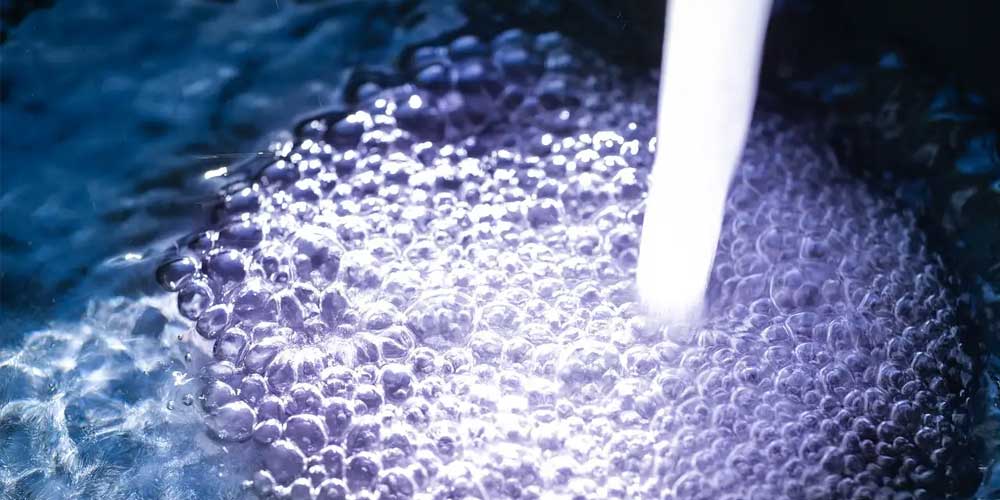Silicone antifoams are normally composed of hydrophobized silica that is finely dispersed within a silicone fluid. The resulting compound is then stabilized into a water-based or oil-based emulsion. These antifoams are highly effective due to their general chemical inertness, potency even in low concentrations, and ability to spread over a foam film. If needed, they can be combined with other hydrophobic solids and liquids to improve their defoaming properties.
Silicone antifoam agents are often preferred. They work by breaking down surface tension and destabilizing foam bubbles, leading to their collapse. This action aids in the rapid elimination of existing foam and also helps to prevent foam formation.
Advantages of silicone defoamer
• Wide range of applications
Due to the special chemical structure of silicone oil, it is neither compatible with water or substances containing polar groups, nor with hydrocarbons or organic substances containing hydrocarbon groups. Since silicone oil is insoluble in many substances, silicone defoamer has a wide range of applications. It can be used not only for defoaming water systems, but also for defoaming oil systems.
• Low surface tension
The surface tension of silicone oil is generally 20-21 dynes/cm and is smaller than the surface tension of water (72 dynes/cm) and general foaming liquids, which improves the foam control effect.
• Good thermal stability
Taking commonly used dimethyl silicone oil as an example, its long-term temperature resistance can reach 150°C, and its short-term temperature resistance can reach over 300°C, ensuring that silicone defoaming agents can be used in a wide temperature range.
• Good chemical stability
Silicone oil has high chemical stability and is difficult to react chemically with other substances. Therefore, as long as the preparation is reasonable, silicone defoaming agents are allowed to be used in systems containing acids, alkalis, and salts.
• Physiological inertia
Silicone oil has been proven to be non-toxic to humans and animals. Therefore, silicone defoamers (with suitable non-toxic emulsifiers, etc.) can be safely used in pulp and paper, food processing, medical, pharmaceutical and cosmetic industrial applications.
• Powerful defoaming
Silicone defoamers can not only effectively break existing unwanted foam, but also significantly inhibit foam and prevent the formation of foam. The dosage is extremely small, and only one millionth (1 ppm or 1 g/m3) of the weight of the foaming medium can be added to produce a defoaming effect. Its common range is 1 to 100 ppm. Not only is the cost low, but it will not pollute the materials being defoamed.
Silicone antifoams are valued for their stability, compatibility with various substances, and effectiveness in low concentrations. However, it’s important to ensure that they comply with regulatory standards and are suitable for the specific application to avoid any adverse effects on product quality or the environment.
Post time: Apr-18-2024

